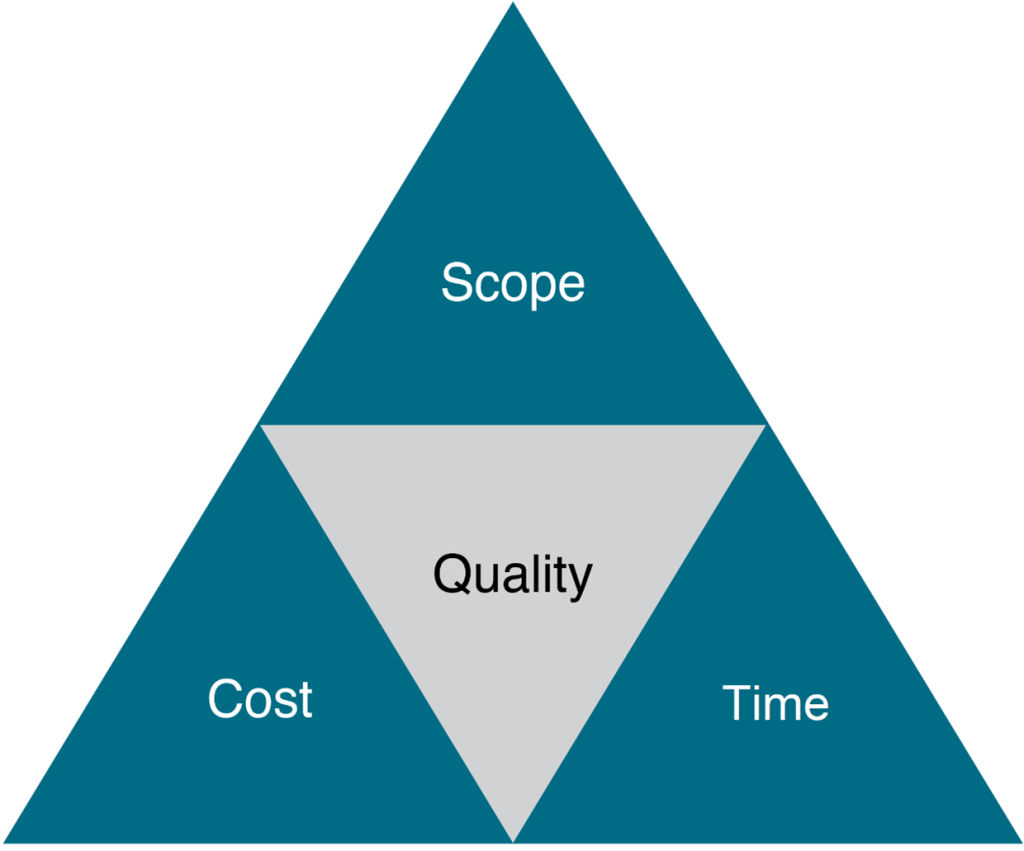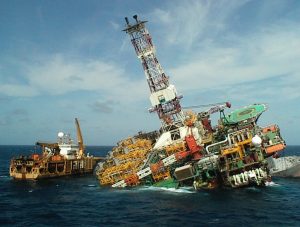1.4. Aspects of Project Management
The Science of Project Management
Project management has been around for centuries if not millennia. From the building of the pyramids to the construction of the great buildings of 19th century London, people have developed ways to break down large projects into smaller more manageable chunks, schedule the work, and obtain the materials needed for the projects. During that time, many tools were developed to manage projects. However, it was not until the large, highly complex defense projects undertaken by the United States during the 1950s drove a push for a more scientific and data-driven, management approach to projects, which was the beginning of the science of modern-day project management.
Project Management Institute
The Project Management Institute (PMI) started in 1969 as an effort to share best practices, and today, it is a non-profit organization with over 500,000 members. PMI has chapters throughout the world, each offers additional benefits in the form of professional development and networking opportunities.
Project Management Body of Knowledge
PMI has codified the standards for project management in the Project Management Body of Knowledge (PMBOK) guide. The PMBOK is best used as a reference guide; it is not recommended for cover-to-cover reading. The PMBOK Guide has been recognized as a Standard by the American National Standards Institute (ANSI) and the Institute of Electrical and Electronics Engineers (IEEE).
The PMBOK guide is organized into nine knowledge domains:
-
-
-
- Project Integration Management
- Project Scope Management
- Project Time Management
- Project Cost Management
- Project Quality Management
- Project Human Resource Management
- Project Communications Management
- Project Risk Management
- Project Procurement Management
- Project Stakeholder Management
-
-
Project Constraints
Managing a project includes identifying your project’s requirements and writing down what everyone needs from the project. What are the objectives for your project? When everyone understands the goal, it’s much easier to keep them all on the right path. Make sure you set mutually agreed-upon goals to avoid team conflicts later on. Understanding and addressing the needs of everyone affected by the project means the end result of your project is far more likely to satisfy your stakeholders. Last but not least, as project manager, you will also be balancing the many competing project constraints.
On any project, you will have a number of project constraints that are competing for your attention. They are cost, scope, quality, risk, resources, and time.
- Scope is what the project is trying to achieve. It entails all the work involved in delivering the project outcomes and the processes used to produce them. It is the reason for and the purpose of the project.
- Time/Schedule is defined as the time to complete the project. Time is often the most frequent project oversight in developing projects. This is reflected in missed deadlines and incomplete deliverables. Proper control of the schedule requires the careful identification of tasks to be performed and accurate estimations of their durations, the sequence in which they are going to be done, and how people and other resources are to be allocated. Any schedule should take into account vacations and holidays.
- Cost is the budget approved for the project including all necessary expenses needed to deliver the project. Within organizations, project managers have to balance between not running out of money and not underspending because many projects receive funds or grants that have contract clauses with a “use it or lose it” approach to project funds. Poorly executed budget plans can result in a last-minute rush to spend the allocated funds. For virtually all projects, cost is ultimately a limiting constraint; few projects can go over budget without eventually requiring a corrective action.
- Quality is a combination of the standards and criteria to which the project’s products must be delivered for them to perform effectively. The product must perform to provide the functionality expected, solve the identified problem, and deliver the benefit and value expected. It must also meet other performance requirements, or service levels, such as availability, reliability, and maintainability, and have acceptable finish and polish. Quality on a project is controlled through quality assurance (QA), which is the process of evaluating overall project performance on a regular basis to provide confidence that the project will satisfy the relevant quality standards.
Project Priority
You may have heard of the term “triple constraint,” which traditionally consisted of only time, cost, and scope. These are the primary competing project constraints that you have to be most aware of. The triple constraint is illustrated in the form of a triangle to visualize the project work and see the relationship between the scope/quality, schedule/time, and cost/resource (Figure 1.2).
Your project may have additional constraints that you must face, and as the project manager, you have to balance the needs of these constraints against the needs of the stakeholders and your project goals. For instance, if your sponsor wants to add functionality to the original scope, you will very likely need more money to finish the project. On the other hand, if they cut the budget, you will have to reduce the quality of your scope.
Project constraints should be defined by certain criteria such as acceptance, enhanced, and/or constrained. Each of these criteria represents a degree of priority to the project and hence assigning the resources. Such constraints are necessary to establish project priorities before the project begins. To explain this, consider a project to develop a vaccine during a pandemic time, the cost of such a project would not be of concern, since the vaccine is needed and therefore the cost is less priority and will be acceptable. Meanwhile, the project scope in achieving a vaccine with high efficacy is more priority than cost, and hence the priority of the scope is constrained. The priority of time in this case can be enhanced allowing for limited time extension necessary to fulfill the scope. Therefore, for such a project we would say the scope is constrained; the time is enhanced and the cost is accepted.
Further, if you don’t get the appropriate resources to work on your project tasks, you will have to extend your schedule because the resources you have take much longer to finish the work.
In summary, the constraints are all dependent on each other. Think of all of these constraints as the classic carnival game of Whac-a-mole. Each time you try to push one mole back in the hole, another one pops out. The best advice is to rely on your project team to keep these moles in place.

In this triangle, each side represents one of the constraints (or related constraints) wherein any changes to any one side cause a change in the other side. The best projects have a perfectly balanced triangle. Maintaining this balance is difficult because projects are prone to change. For example, if scope increases, cost and time may increase disproportionately. Alternatively, if the amount of money you have for your project decreases, you may be able to do as much, but your time may increase.
Project Example
Here is an example of a project that cut quality because the project costs were fixed. The P-36 oil platform (Figure 1.3) was the largest footing production platform in the world capable of processing 180,000 barrels of oil per day and 5.2 million cubic meters of gas per day. Located in the Roncador Field, Campos Basin, Brazil, the P-36 was operated by Petrobras (Offshore Technology, 2021).

“1.3: Project Management Standards and Certifications” from Project Management Fundamentals by J Scott Christianson is licensed under a Creative Commons Attribution-NonCommercial-ShareAlike 4.0 International License.
“2. Project Management Overview” from Project Management – 2nd Edition by Adrienne Watt; Merrie Barron; and Andrew Barron is licensed under a Creative Commons Attribution-NonCommercial-ShareAlike 4.0 International License, except where otherwise noted.

